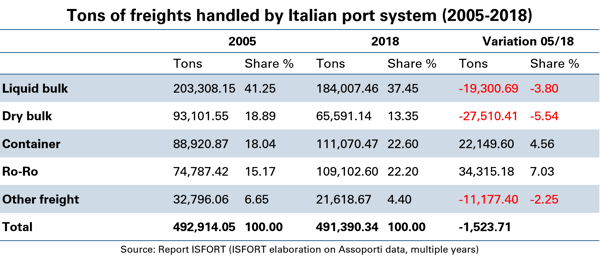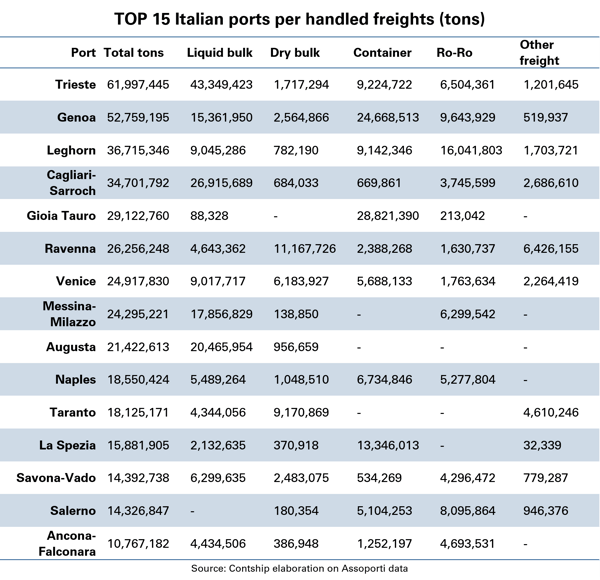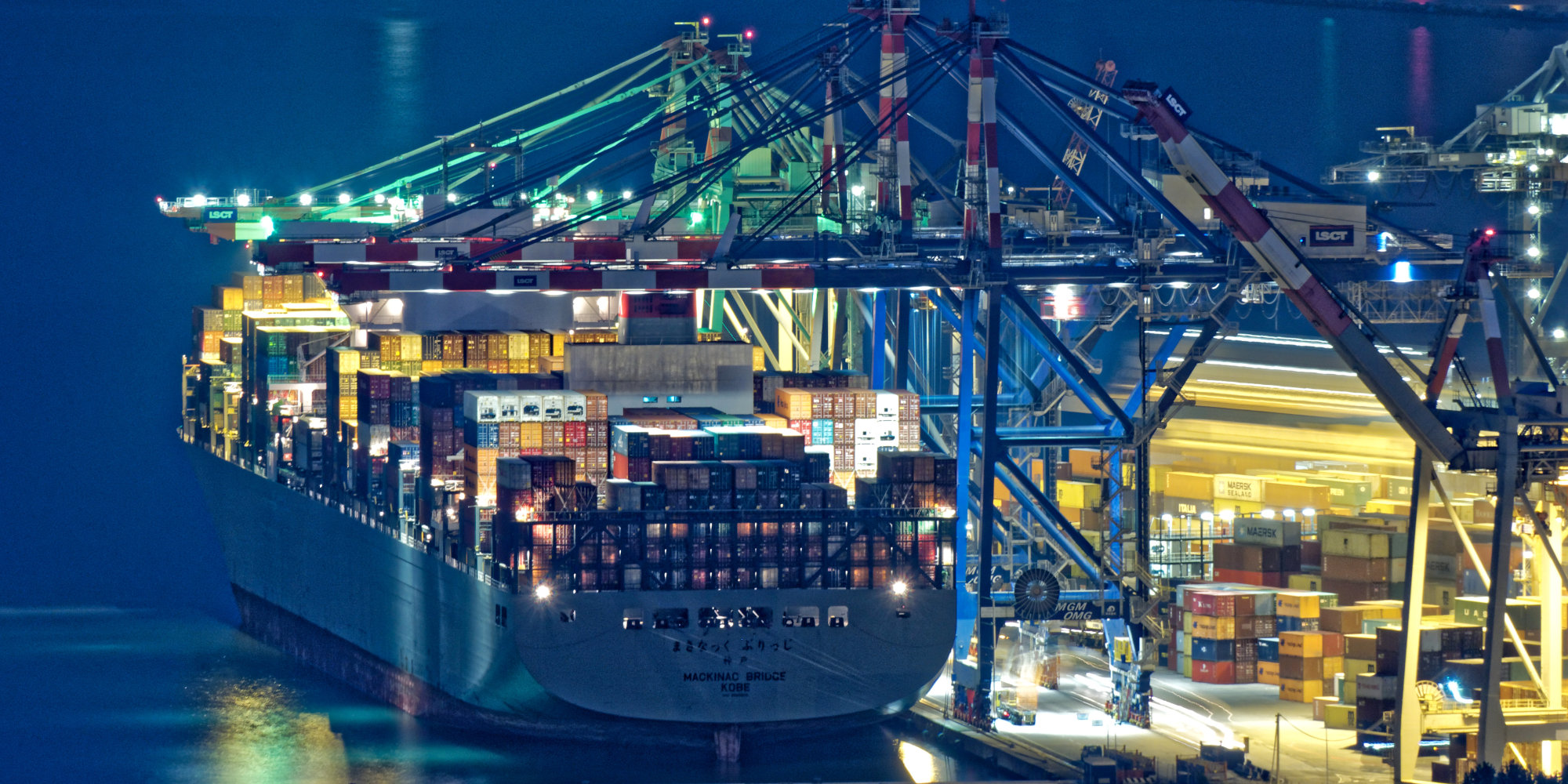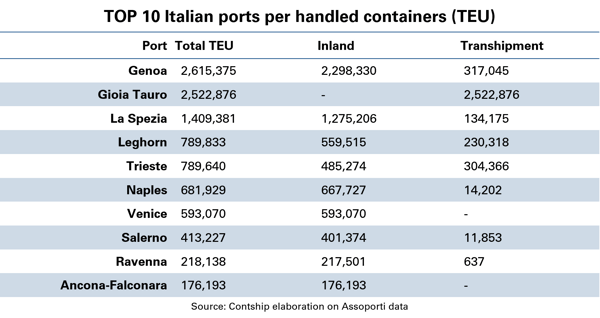Italy’s main commercial ports continue to play a vital role in the country’s international trade-driven economy and will continue to be so during both challenging and good times. In this context, the importance of commercial ports should not be underestimated, they are the real gateways to internal markets for maritime traffic, capable of transferring goods from the ship to the final destination, and vice versa.
In this article we provide an overview of the main commercial ports in Italy, first starting with a classification of different types of ports and types of goods handled, so that we can better understand how to evaluate the performance of individual ports and draw up one general ranking.
To sum up, we will try to provide answers to the following questions:
-
How are ports and goods entering and leaving the port distinguished?
-
What are the most important Italian ports?
How to distinguish between ports?
Before drawing up a general classification to determine the most important Italian ports, it is good to introduce some basic distinctions on the specializations of different ports. Each Italian maritime hub, in fact, is characterized by its own traditional and preponderant activity and the general classification can vary greatly according to the category of goods analyzed.
According to the ISFORT Report "Reflections on the transport system in Italy", just over half (50.8%) of the ships that landed in Italian ports in 2018 transported liquid and dry bulk.
Bulks are goods transported directly in the hull of the ship, without being stored in containers, or packaged. Examples of liquid bulk are: oil, palm oil, liquid chemicals; while some examples of solid (or dry) bulk are: coal, cereals, grains.
Containerized goods handled by the Italian port system in 2018, account for 22.6% of the total. Intermodal container traffic (ship to truck or ship to train) is particularly important for our country since it carries 38% of our import export, making it the second preferred type of transport for foreign trade. Road transport remains in first place (49%), while the remaining share is divided between air (11%) and railways (2%).

Another type of service that deserves to be explored are Ro-Ro ships, used to transport vehicles, which in 2018 represented 22.2% of the freight traffic tonnes managed by Italian ports.
Ro-Ro ships are ferryboats equipped with hatches that allow wheeled vehicles to Roll-On and Roll-Off the ship autonomously and without the aid of external mechanical means.
Italy has been able to exploit its geographical position and distinguish itself with the best equipped fleet in the Mediterranean, intercepting over the years the so-called "motorways of the sea", i.e. the routes traveled by lorries in the east-west direction (from the Balkans to the Atlantic) and north-south to Africa.

After this first clarification on the main types of freight ships, we can focus on container traffic and move on to a second distinction, namely the difference between gateway and transhipment ports.
Gateway ports commonly involve moving the container from one mode of transport to another, for example ship / train or ship / truck. Gateway ports can be considered the continental ports for maritime traffic, which transfer containers from the ship to the final destination, and vice versa, through its own road and rail transport corridors.
Transhipment ports or hubs, on the other hand, involve moving the container with the same mode of transport: ship / ship. They basically deal with the transfer of containers from one ship to another. Transhipment ports are characterized by a very large yard, because the containers may have to wait for many days before being transferred from one ship to the other. Geographic position of transhipment ports is also strategic, as it should require the minimal possible deviation from the main maritime route.
Transhipment activities respond to a double need. Through the “hub and spoke” system, they redistribute cargo from larger vessels (called mother ships) to smaller units (feeders) which are used to deliver cargo to regional ports which are not able to be called by larger ships (due to quay, equipment and yard restraints or insufficient volumes). Through the "relay" model transhipment hubs act as joints between major intercontinental routes (from mother ship to mother ship), allowing shipping lines to potentially reach every port in the world.
In this sense, the influence of shipping companies is evident in the development of transhipment ports, according to their own service networks and commercial strategies.
Which are the most important ports in Italy?
At this point, we can draw up a ranking of the most important Italian commercial ports, starting from an analysis by tons handled and then focusing on container traffic.
As reported in the official document published by Assoporti (Association of Italian Ports), in 2019 all Italian ports managed a volume of freight traffic of around 479 million tons, recording a decrease of -2.4% on 2018.
If we look at the total handled tonnes, the port of Trieste, with the highest handling of liquid bulk, holds the Italian record.
The port of Genoa follows, characterized by high container traffic, which also wins the silver medal for Ro-Ro activities. Leghorn holds the third place for tons of goods handled in 2019, of which Ro-Ro traffic made up almost a half.

If we focus on container traffic instead and examine the TEUs handled in 2019, the ranking of the most important Italian ports changes radically.
Please note that TEU stands for Twenty-foot Equivalent Unit and is the standard measurement of volume in the transport of ISO containers (which precisely measure 20 ft long x 8 ft wide x 8.5 ft high). This measure is used to determine the capacity of a ship or the number of containers handled in a port quay over a certain period of time.
In this ranking, we find the port of Genoa in first place, followed by Gioia Tauro. Both ports handled over 2.5 million TEUs in 2019, however with a big difference.
The port of Gioia Tauro in fact has carried out exclusively transhipment operations. On the contrary, for the Port of Genoa the transhipment weighed around 12%. The rest of the container handling is instead dedicated to the hinterland operations for import-export. This means that the goods, once unloaded from the ship and duly cleared through customs, are loaded on truck or on a train and are transported to their destination through transport on land.
In 3rd place for TEUs handled in 2019, we find the port of La Spezia, with its 1.4 million TEU, almost entirely dedicated to inland operations.





.jpg)
